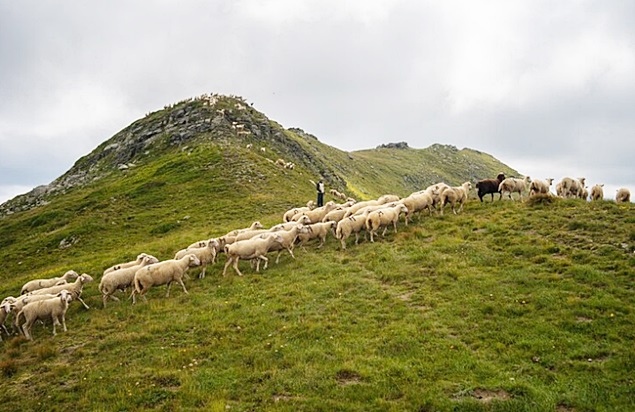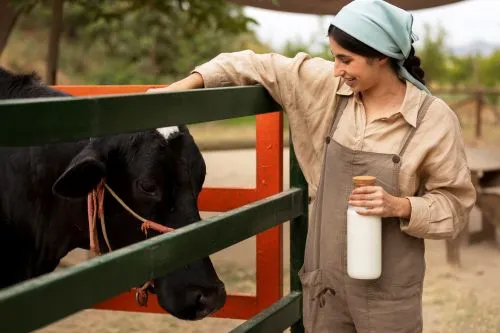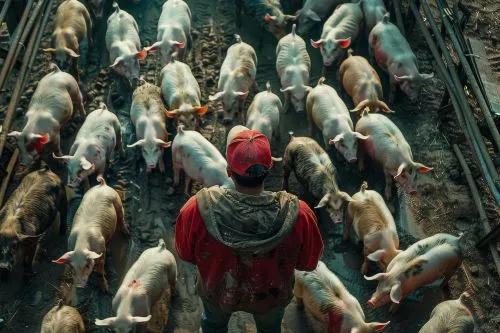
Since in the mountainous area, pastoral heritage represents, by our tradition, the most precious fodder resource for cattle, sheep, goats, horses, and other herbivorous domestic animals, below we present some agricultural works that should be carried out on pastures at the beginning of spring:
Farmers who have agri-environment and climate commitments under Measure 10 - Package 1 - high nature value grasslands and Package 2 - traditional agricultural practices must comply with the following requirements:
• Do not apply organic fertilizers on water-saturated, flooded, frozen, or snow-covered land; • Manure is applied in the mountainous area after March 25th, until November 5th (according to the new Code of Good Agricultural Practices). To better utilize manure on pastures, it is recommended that it be applied in composted form, thus favoring the proliferation of valuable perennial grass and legume species, with the fodder having better digestibility and a higher conversion rate into animal products; • Liquid organic fertilizers (manure) can be applied according to the same calendar (between March 25th and November 5th), diluted with water (for every part of manure, add 5 parts of water). Also, uniformity of administration, weather conditions, and soil condition must be considered, thus avoiding application in windy conditions, strong sunlight, or during rains; • Traditional use of manure is allowed up to the equivalent of a maximum of 40 kg N s.a./ha (or manure from 1 LSU) or a maximum of 100 kg nitrogen s.a./ha/year on grasslands on lands without agri-environment and climate commitments; • Do not apply organic or mineral fertilizers on existing protection strips on agricultural land located near surface water protection areas or on agricultural land located in surface water protection areas or in sanitary and hydrogeological protection zones of drinking/mineral water catchment sources and therapeutic lakes, established in accordance with the current legislation. The minimum width of the protection strips is 1 m on lands with a slope of up to 12% and 3 m on lands with a slope greater than 12%, the slope of the land being the average slope of the physical block adjacent to the watercourse; • Surface seeding or overseeding will not be performed, and seeding can only be done with species from the local flora and only in cases where some areas are accidentally affected (P1, P2, P3, and P6); • Plowing or harrowing of existing pastures on farms with ongoing commitments is prohibited; • The use of chemical fertilizers and pesticides is prohibited; • Burning of marshes and plant residues on arable land, as well as vegetation of permanent pastures, is prohibited; • Landscape elements must be preserved, including isolated trees and existing terraces on agricultural land, taking appropriate measures to prevent the establishment of unwanted vegetation and ensuring a minimum level of land maintenance.
Other agricultural works on pastures:
• Continuation of clearing unwanted woody vegetation from pastures (trees and shrubs from the hardwood group; conifers); • Leveling of molehills; • Clearing of stones, stumps, roots, dry plant residues; • Soil erosion control works; • Removal of excess temporary moisture through drainage channels and permanent excess through drainage; • Starting tree planting for shade for animals; • Starting land preparation by harrowing, milling, plowing, etc. for overseeding or reseeding degraded pastures.
Organizational meetings of livestock breeders' associations and pasture owners, bidding and allocation of pastures, setting and collection of grazing fees, and other issues related specifically to communal grazing areas are concluded.
The mayor's office is responsible for organizing pastoral development work on communal grazing lands, and pasture users are responsible for their rational exploitation. The best business card or mirror of a mayor's activity was and still is the correct management of the communal grazing land.
Likewise, the secretary keeps records and the budget of the pasture: - it is desirable to re-establish grazing associations that have proved to be extremely active and useful for animal husbandry; - total prohibition of grazing with foreign animals, especially sheep, on communal grazing lands, where only authorized animals for which a grazing fee has been paid and breeders have performed maintenance works should be accepted; - funds resulting from grazing fees will be used in full for improving pastures; - if one of the above provisions is not respected, the animals of the respective owner are excluded from grazing.
The municipalities and citizens of a locality stand to gain in the future from the communal grazing land provided it is well managed and administered by locals and their elected representatives. (Photo: Freepik)




